

| Home | For sale | Site map | Contact information | Guest book | Stielhandgranate 24 menu |
 Alternative
use of the Stielhandgranate
24 Alternative
use of the Stielhandgranate
24  |
|---|
|
The
Stielhandgranate 24 was of course manufactured to be used as a handgrenade, but it could also be used for other purposes.
Geballte und gestreckte Ladung The Stielhandgranate 24 contained 165 grams of explosives, more than enough for a handgrenade. But for the infantry the need for more (blast) effect sometimes forced them to go for other solutions. The German manuals described how the soldiers themselves could make a convenient concentrated charge (Geballte Ladung) from 7 heads of the Stielhandgranate 24. This somewhat heavy "handgrenade" contained 1155 grams of explosives and could be used for demolition, antitank or antipillbox work. 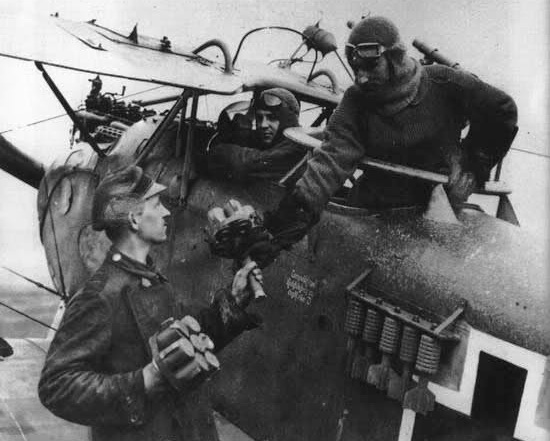 The "Geballte Ladung" was not only used with the Stielhandgranate 24. It was already in use during The Great War with the Stielhandgranate 15. In the picture above a pair of "Geballte Ladung" are loaded aboard a makeshift "bomber". The outboard rack contains 5 mortar rounds for the Granatenwerfer 16. 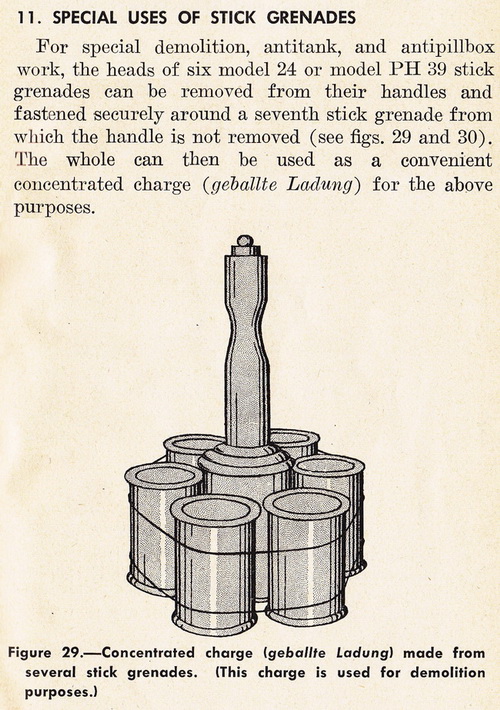 The above text and picture is from the handbook German Infantry Weapons, dated May 25, 1943. 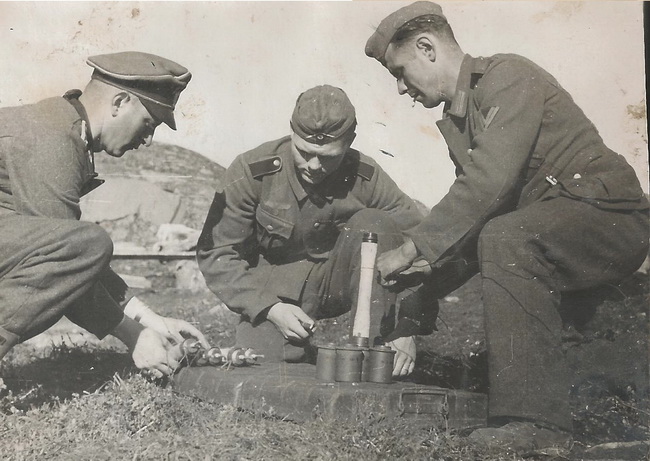 (Picture courtesy of Tighe) Construction of a "Geballte Ladung". 6 handles have been removed and a wire is about to be wrapped around the 7 heads to keep them together. 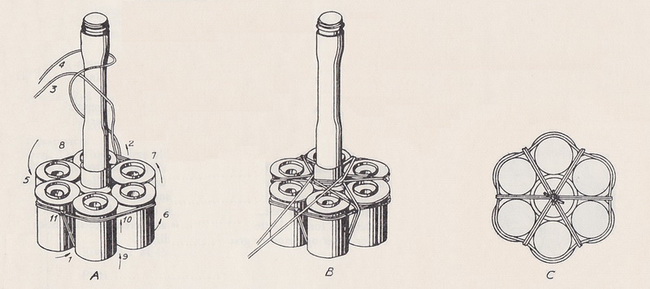 These sketches show the method of tying the heads together with a cord. Although this appears to be the prescribed method, a simple wire coiled a few turns around the base seems to have been the preferred method. 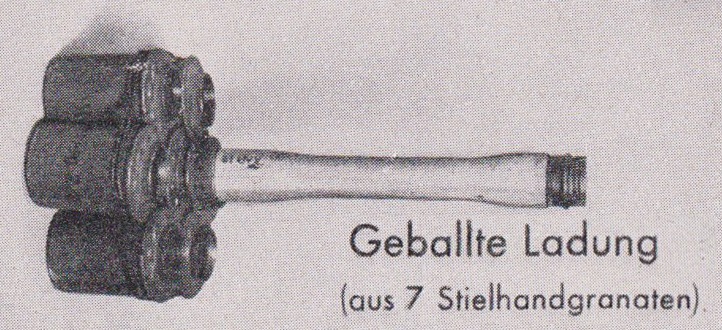 This picture is from the booklet "Panzernahkampfmittel" and clearly shows the prescribed method of tying the heads together with a cord. 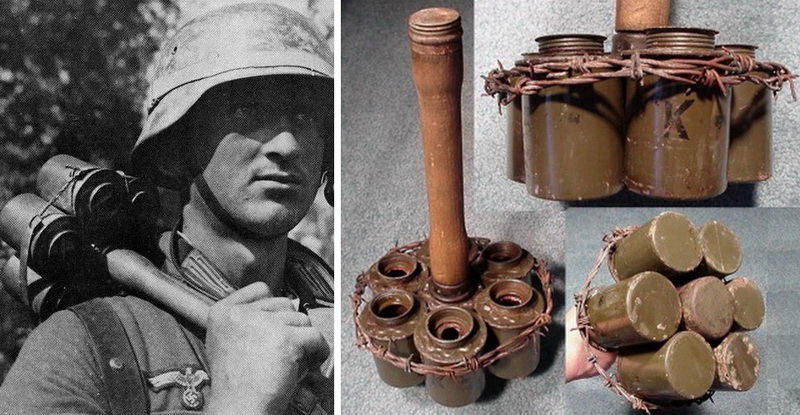 Two alternatives to using steel wire. Note that the Geballte Ladung on the right was made from heads from the third version, manufactured by fcc. I assume this one is a postwar asembly.  (Picture courtesy of ROS, Russland) The above Geballte Ladung is a real dug-up, found in Russland. The creator used some lengths of a standard telephone cable to tie the heads together in a rather unorganized way. New information added: 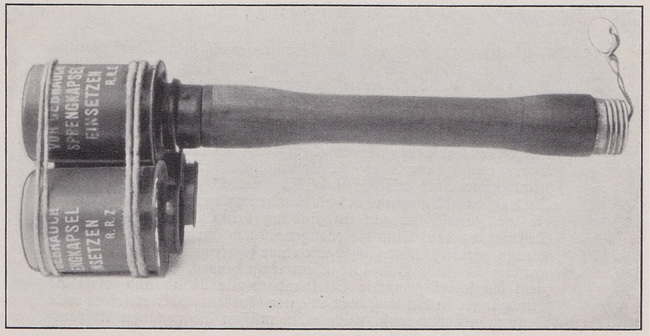 According to the 1936 dated manual "Die Stielhandgranate 24 und ihre Handhabung" a Geballte Ladung could be made of any number of heads, as long as they were firmly connected to each other. If this was not the case, loose heads could be placed together for demolition, but a Sprengkapseln had to be put inside each head. 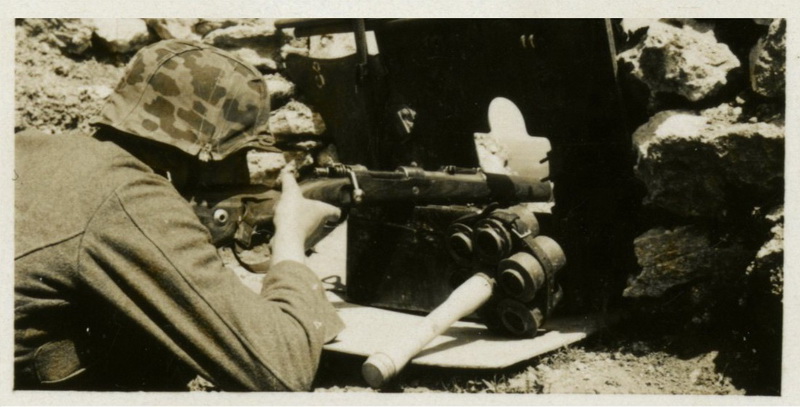 Picture above was taken by Waffen-SS Kriegsberichter Augustin on the Eastern Front in 1941. It shows yet another method of making a Geballte ladung, this time by using a standard leather strap with a roller buckle. Another use of the Stielhandgranate 24 was as a "Gestreckte Ladung" (equivalent to a Bangalore torpedo in English).  The picture above was printed in the booklet "Die Handgranate 24 und das Handgranatenwerfen". The accompanying text describes the construction of the "Gestreckte Ladung". A number of handgrenade heads can be fastened to a rod or a bar with a maximum of 15 cm distance from each other. All openings must point the same way. A complete Stielhandgranate 24 must be placed at the start of the bar. A detonator, with the opening pointing outwards, must be placed inside all of the heads just prior to use. The detonators must be wedged with a wood chipping. The "Gestreckte Ladung" would be initiated by pulling a wire attached to the cord of the complete Stielhandgranate 24. 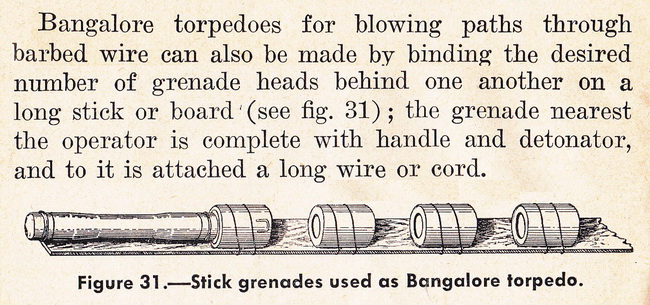 The description in "German Infantry Weapons" drops the detonators. I haven't been able to find any (real) pictures of the "Gestreckte Ladung" in use. The contemporary German manual sums it up: To destroy long objects, use "Gestreckte Ladungen". "Geballte Ladungen" can be used to make holes or to cause a large blast effect. Die Spannmutter and improvised mines The "clamping nut" was a multi-function item that was part of the "Kasten, Zubehör für Sprengdienst" (Accessory box for explosive work). 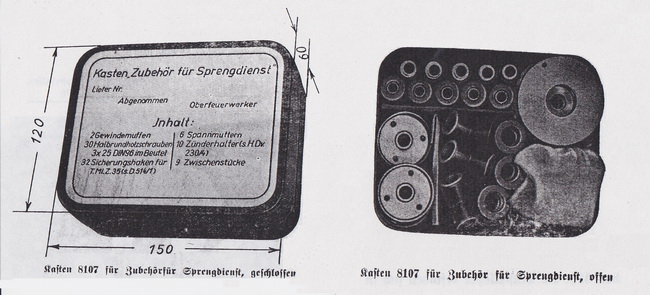 In the above picture of the open box the Spannmutter can be seen in the lower left corner. The small bag in the lower right corner contained 30 wood screws to be used with the Spannmutter when needed. 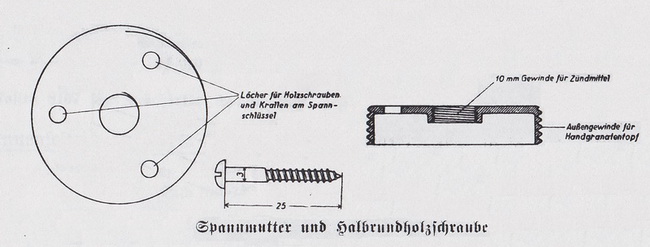 The threaded hole in the center of the Spannmutter accepted all standard German fuzes used on mines, or constructed for explosive work. The three holes were used to anchor the Spannmutter and the fuze to any wooden object. This made it possible to construct an endless variety of explosive devices/boobytraps. The outer edge of the Spannmutter was also threaded, and would fit into the head of Stielhandgranate 24. This made it easy to convert one or more heads into an improvised mine. 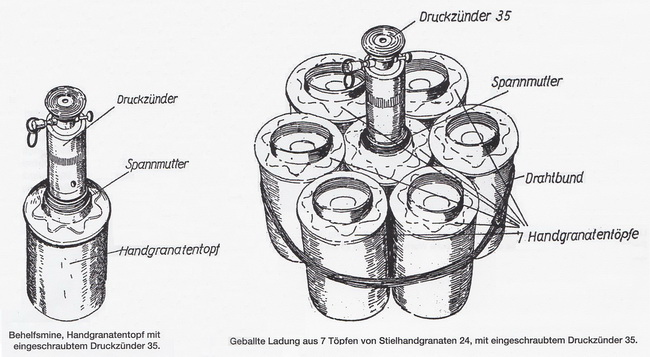 Simple boobytraps The easiest way was of course to just fasten the Stielhandgranate 24 to any object by anchoring it or tying it down. A trip wire connected to the original draw cord would then do the job. 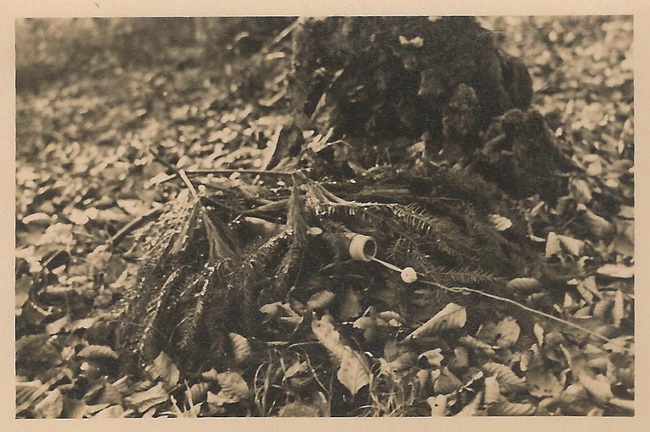 (Picture courtesy of Tighe) An item that never was meant for the Stielhandgranate 24...  This clamping device is often found on Ebay, presented as a booby-trap clamp for the Stielhandgranate 24. It appears to fit neatly around the upper part of the wooden handle, and could have been used to anchor down a Stielhandgranate 24 in order to turn it into a booby trap. But this device was never manufactured for this purpose (or for the Stielhandgranate 24) at all. 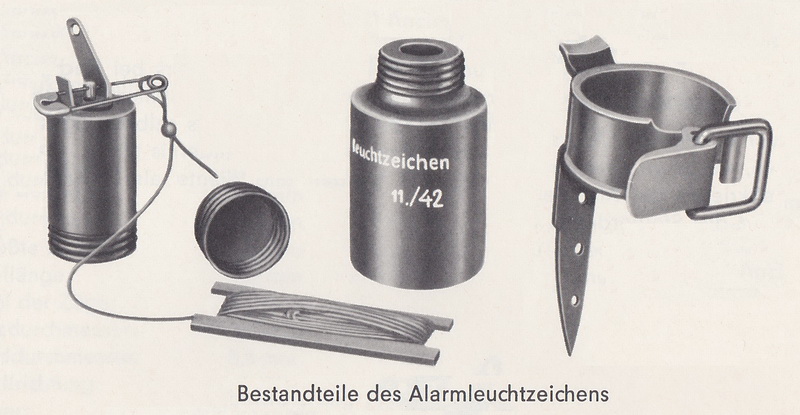 The clamp was in fact part of the Alarmleuchtzeichen, a tripwire activated signaling device used to detect infiltrating enemy troops. It was never manufactured to hold a Stielhandgranate 24, and most probably was never re-used to hold one. |
| Home | For sale | Site map | Contact information | Guest book | Stielhandgranate 24 menu |